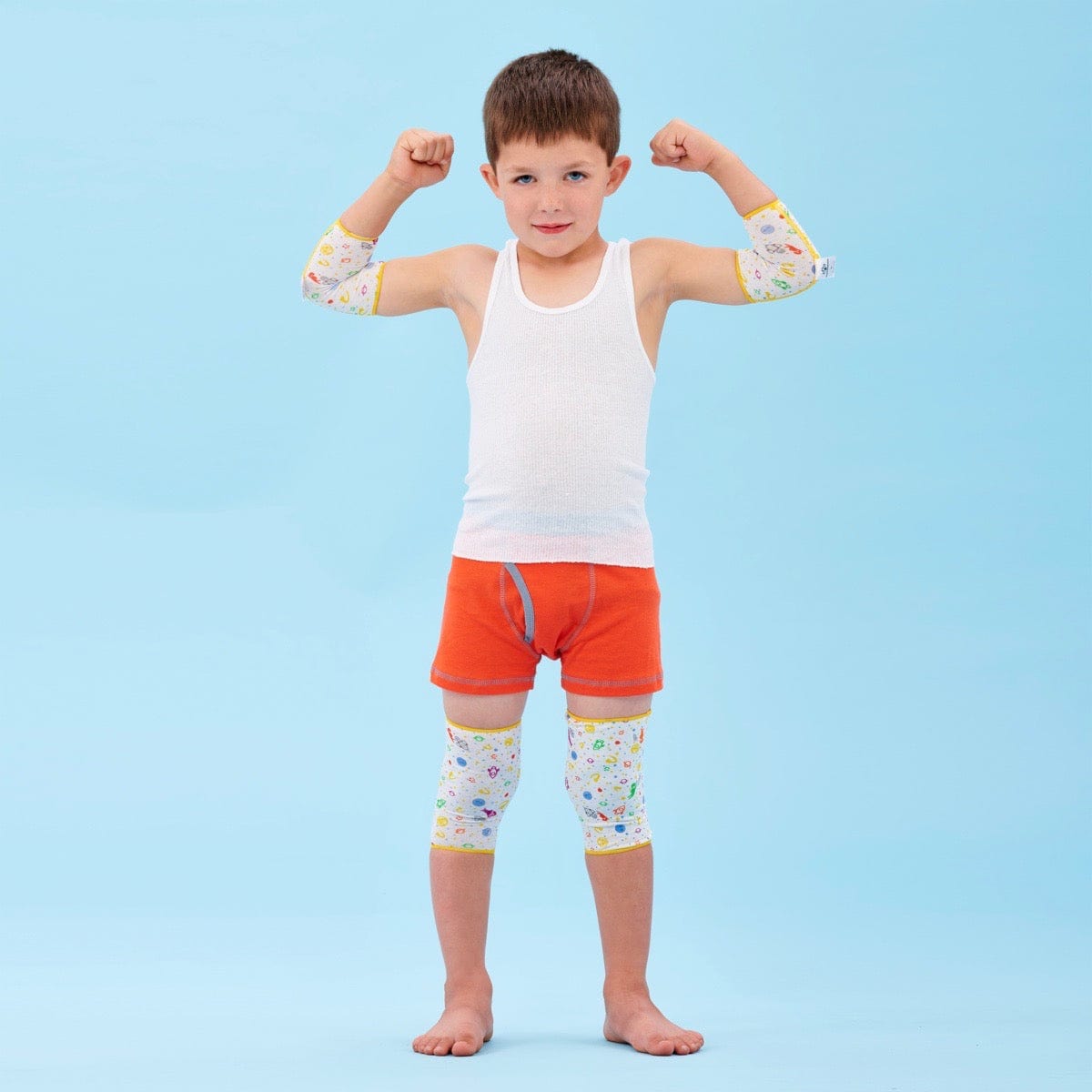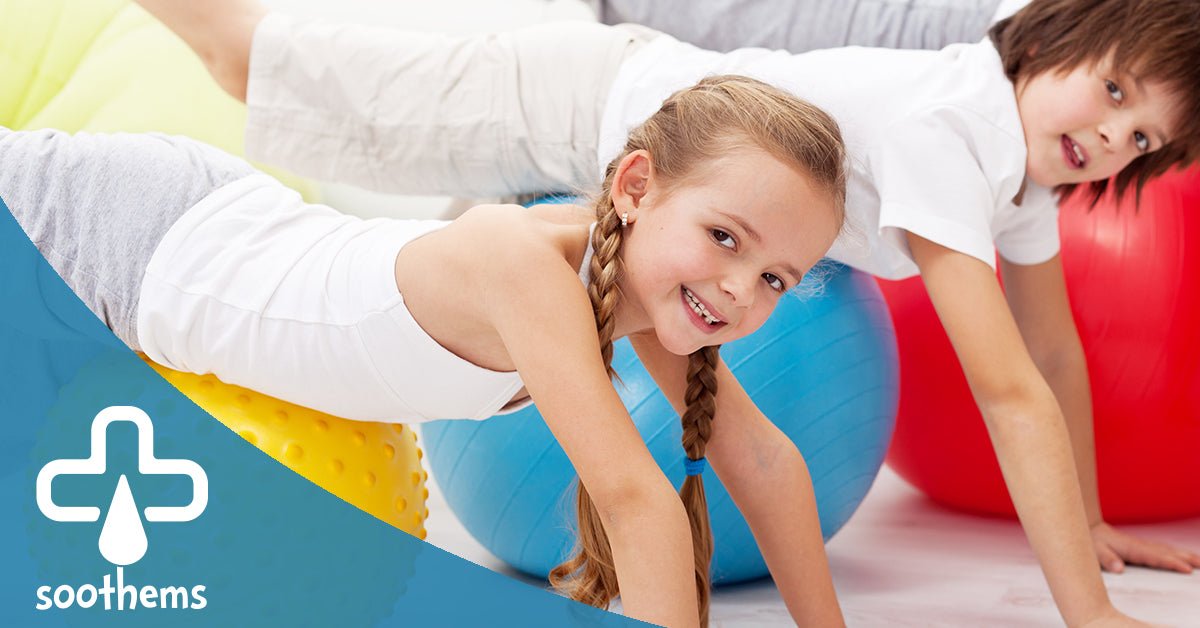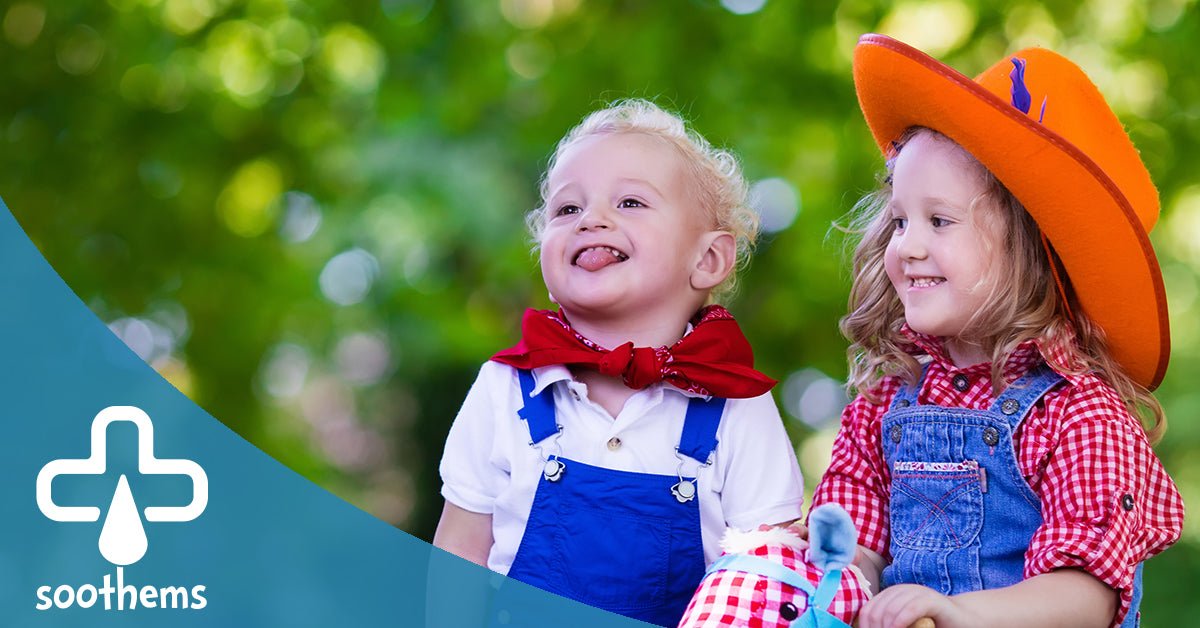In previous blog posts, we’ve explained the connection between eczema and food. But your child’s diet isn’t the only thing that needs to be managed. Many children with the skin condition find it difficult to play outside with friends for a prolonged period of time. It becomes even more of a challenge when kids grow older and join sports teams. There’s no question that the frustration and discomfort of eczema can get in the way of exercise. How does your child avoid overheating, irritation, and flare-ups when they’re just trying to have fun? To begin with, the regulation of body temperature plays a major role for those with eczema. This is where sweat comes into play.
Sweat and Eczema
Humans sweat to moderate our temperature. In this article from the National Eczema Association, John Fuller mentions that perspiration is largely made up of water, urea, lactate, as well as minerals such as sodium. For children with eczema, exercise can dry out the skin through the loss of fluids, while the sodium in sweat further dehydrates the skin. It’s not uncommon for exercise to trigger constant scratching as the skin surface temperature increases in someone with eczema. That said, here are six tips for exercising with eczema:
- Drink plenty of water - This goes for everyone, not just those with a skin condition. Remember that drinking fluids throughout the day will replace any water lost when sweating. Those with eczema have dry skin and are therefore susceptible to weaker skin barrier function. So if your child doesn’t already drink a lot of water, help them create a habit of doing so.
- Choose the right clothing - We’ve explained the importance of wearing soft clothes that are breathable. Whether exercising or not, steer clear of wool fabrics, nylon, or stiffer material. Keep in mind that breathability increases the speed of healing. On the other hand, the wrong clothing may aggravate eczema symptoms. Synthetic moisture “wicking” clothes do a great job of drawing sweat into the garments, but may feel rough and irritate eczema. Frankly, with the number of options available, it’s all about personal choice.
- Keep cool - The last thing you want is for your child to overheat. One idea we have is to pack a towel with them so they can wipe off sweat during exercise. If at all possible, try to have your son or daughter exercise in indoor facilities that are well-ventilated.
- Respond to your eczema during exercise - This is especially important if your child participates in competitive sports. The misconception out there is that taking regular breaks equates to cheating. Don’t let your child buy into that notion! A quick break should provide the chance to rest, rehydrate, and cool down if you’re sensing the start of an eczema flare-up. Post-exercise, cold compression wraps can be used for cooling your child’s skin and calming the itch of their eczema. Just don’t wait until to use them until after the symptoms have already worsened.
- Moisturize, moisturize, moisturize - Moisturizer works to protect your child’s skin before and after exercise. Be aware that a heavier ointment may feel hot and actually trap in sweat, so opt for a lighter application of ointment about an hour before exercise. This gives the moisturizer plenty of time to be absorbed fully.
- Choose cold showers over hot - After a challenging practice or long game, your kiddo may want to relax with a hot shower as soon as they get home. It’s definitely a good idea to wash off sweat rather than let it sit on dry skin. However, scalding hot water is a no-no for those with eczema. Encourage them to start with a warm shower and gradually make it cooler over several minutes.
The Importance of Your Child Exercising
Many parents worry that excessive physical activity will do nothing but wreak havoc on their child’s skin. That’s why it’s important to take a step back at times and remember the countless benefits of exercise on the body and mind. For example, regular exercise helps control weight, reduce stress, and release endorphins. Not only that, but there’s nothing that quite compares to playing sports and learning valuable life lessons that come along the way in competition. Here’s our advice: Don’t prevent your child from exercising just because of their eczema. Granted, you may have to adapt what they do or work with them in compromising on the frequency and intensity. But don’t underestimate the power of exercise. In fact, exercise can be used to release stress and improve mood, which ultimately benefits the skin as well.
Finding the Right Exercise for Your Child
There is no ideal type of exercise for children with eczema. That’s why it’s best to encourage your son or daughter to experiment with a variety of exercise routines. At first, consider low-impact exercise such as tai chi, Pilates, or yoga, which improve mobility, muscle strength, and reduce stress. Don’t give up on encouraging your child to stay active, either. There may be instances where your child deals with the occasional flare-up. But as long as you have an effective plan of action and educate them prior to beginning a sport or other physical activity, things should go smoothly.
At Soothems, we want your child to enjoy exercising and having fun with friends. That’s where our therapeutic clothing for eczema comes into play. We are proud to have an extensive selection of eczema clothing, including the following:
- Eczema suits
- Eczema sleeves
- Eczema bottoms
- Eczema sleepwear






Leave a comment
All comments are moderated before being published.
This site is protected by hCaptcha and the hCaptcha Privacy Policy and Terms of Service apply.